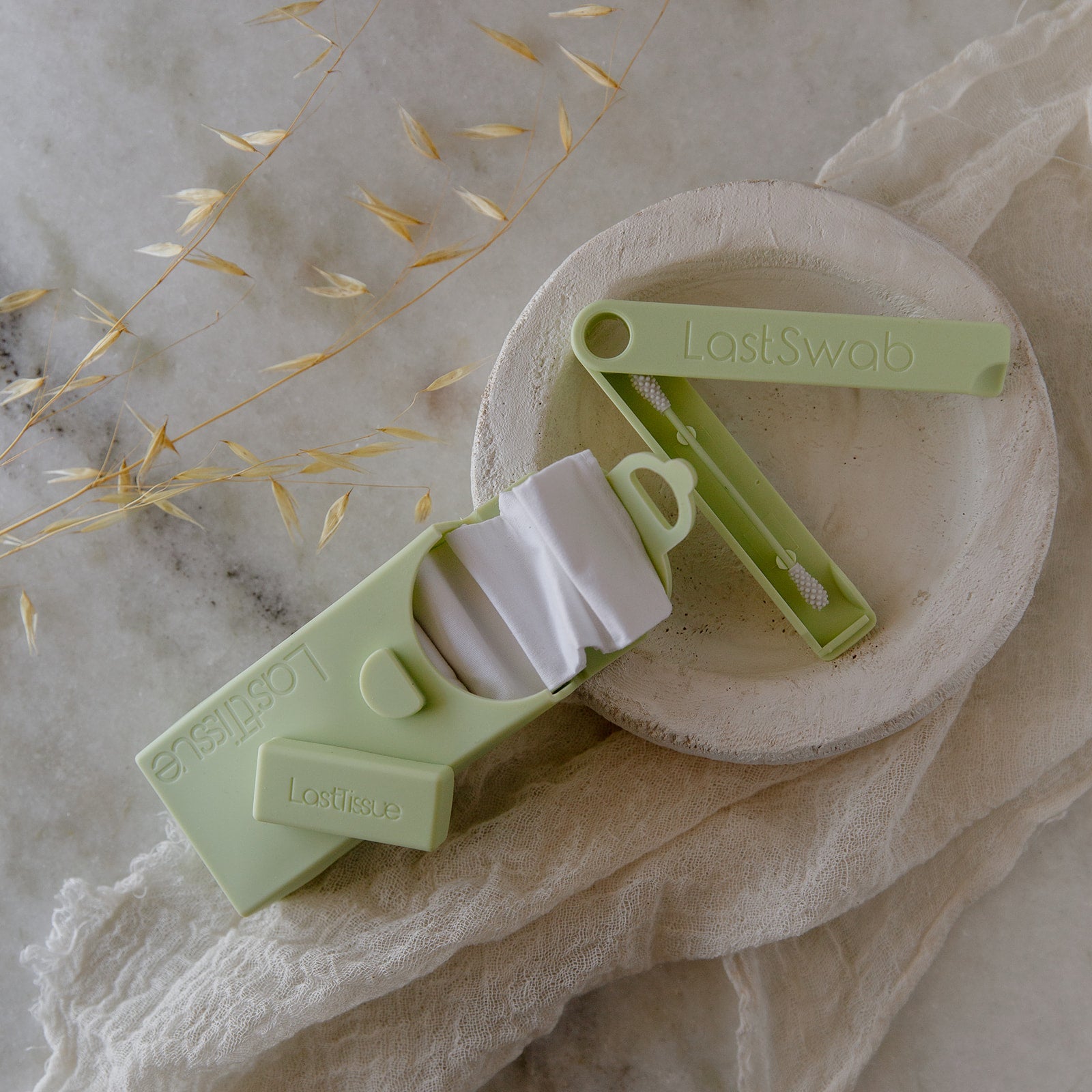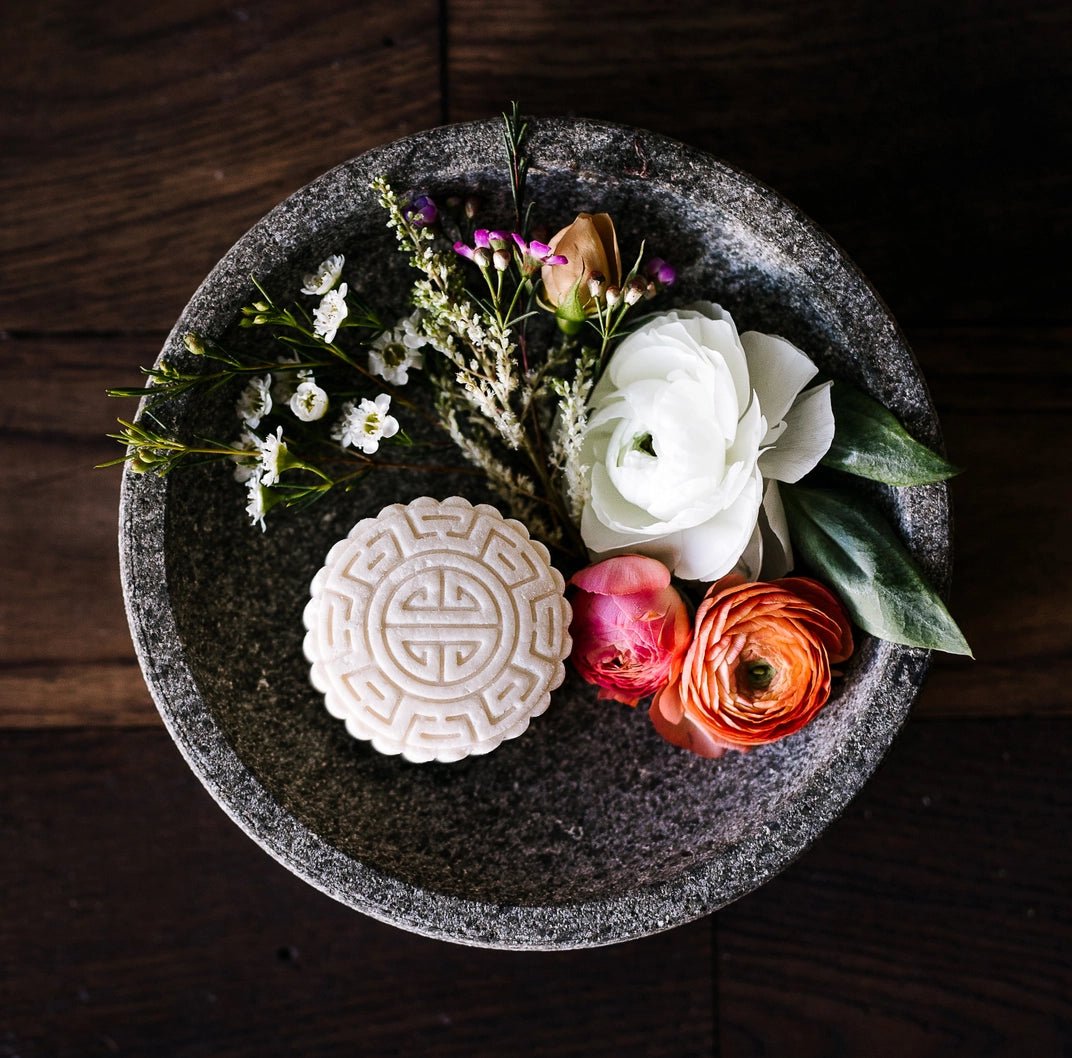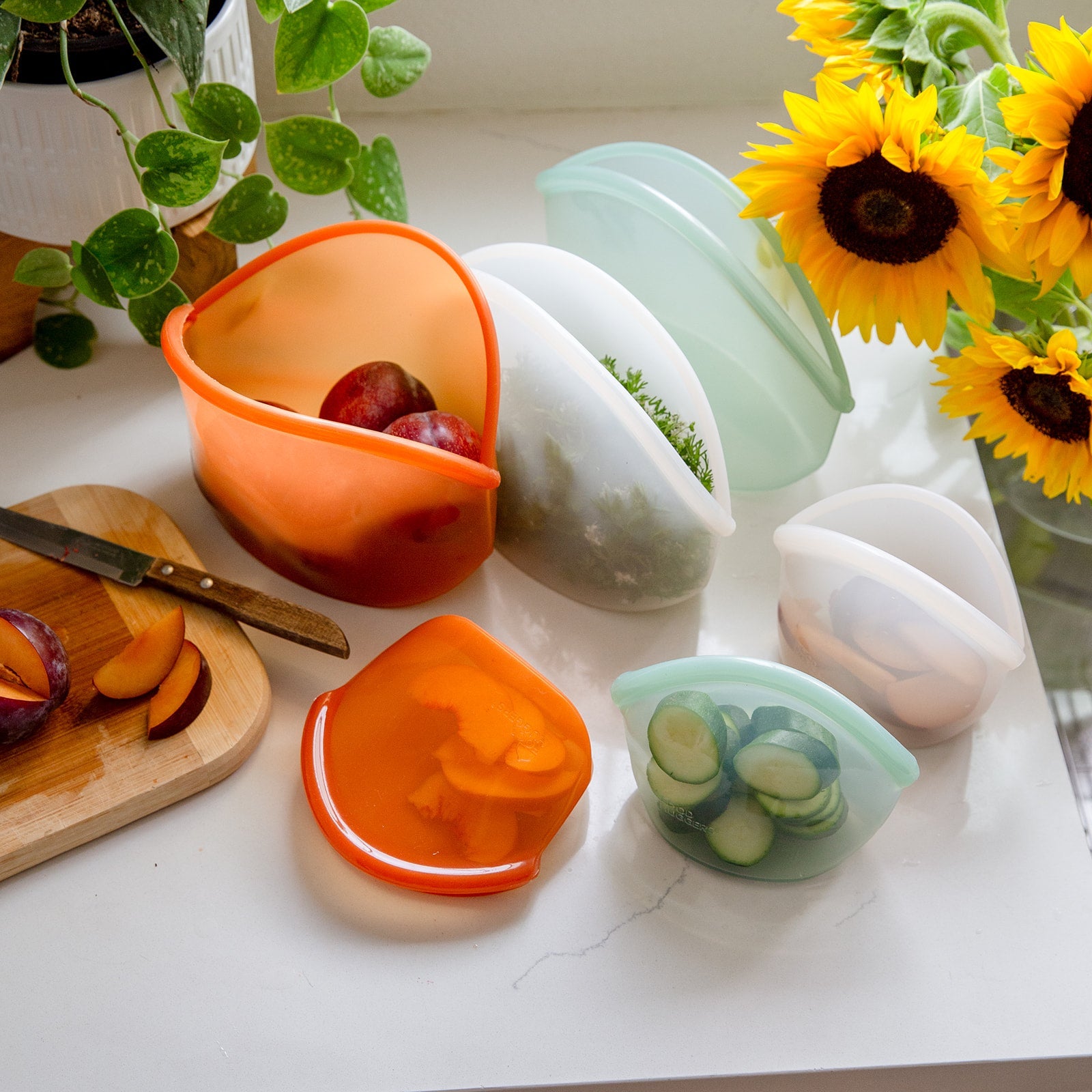Could This Be Your Last Tissue And Last Swab Ever?

The bathroom can be a hotspot for single-use plastic! The average American produces over 280 pounds of plastic waste every year and a lot of that can be found within the bathroom.
While having a zero waste bathroom is the ultimate goal, it doesn’t have to happen overnight. A few eco-friendly swaps can help kick start your journey. Let’s look at disposable tissues and ear swabs; at first glance, they may appear to be a harmless part of your grooming ritual, but they have a big impact, especially for our oceans and forests.
The Problem with Disposable Ear Swabs
You may have seen this grim photo of a tiny seahorse holding on to a cotton swab which highlights the plastic issue we have today. Every year, we dump 8 million metric tons of plastic into our oceans and cotton swabs account for up to 6% of it. They have been found in the digestive tracts of seabirds and turtles, potentially causing internal damage. Yet, even when taken to landfill, they can take up to 300 years to breakdown.
This isn’t just about plastic, though. Q-Tips are made of cotton—a crop notorious for having a terrible environmental footprint. To start, cotton requires a lot of water. One kilogram of cotton requires 20,000 liters along with toxic pesticides, much of which are flushed into our rivers and oceans.

The Problem with Disposable Tissues
Disposable tissues are no better for the environment. Approximately 27,000 trees are cut down every day to fill our daily demand for toilet paper alone. This results in a huge amount of trash and accounts for 10% of deforestation which is a key contributor to global warming.
Are There Any Alternatives?
Yes! Fortunately, there are now great reusable tissues and ear swabs on the market so you can avoid sending more waste to landfills and the consequences that come with it.

Introducing the Last Tissue and Last Swab
Belonging to the wider ‘Last object‘ company, the Last Tissue and Last Swab were invented by sibling designers Isabel Aagaard and Nicolas Aagaard, and their business partner Kåre Frandsen. The trio were frustrated by all of the single-use waste and decided to design innovative solutions to wasteful products that have become part of our daily routine.
What Is the Last Swab Made Of?
Rather than having cotton ends, the reusable Q-Tip is made from thermoplastic elastomers, TPE. This makes them sturdy and durable while working just as great as regular swabs for grabbing unwanted particles, wax, or makeup residue.
While some might grumble that the product has synthetic materials, the entire point of Last Swab is its longevity. You can use it up to 1,000 times which according to the brand is 8.3 times better as an option than even the most eco-friendly single-use swabs made of paper or bamboo.

What is the Last Tissue Made Of?
It contains six tissues made from GOTS certified organic cotton which come in a reusable silicon pouch. The best part? The pouch has an invisible hygiene barrier to separate the used and new tissues. Plus, each tissue can be washed up to 520 times, meaning that you can use these tissues for years!
Benefits of the Last Tissue and Last Swab
1. Cost-effective
Disposable tissues and swabs might seem cheap at first, but the cost adds up over time. Assuming you use several in a cleaning session, you might be using up more products than you think.
While the initial cost of the Last Tissue and Last Swab may be slightly higher, they can be used multiple times before needing to be replaced. You’ll save precious time from shopping each month and save some money in your pockets – we’d call that a win!
2. Travel-friendly
Whether it’s backpacking, road tripping or taking a luxury trip, the last thing you need is to run out of essentials. Luckily, you will never encounter this problem with the Last tissue and Last swab! They both come with a travel holder case, making it easy for you to carry them wherever you go. You’ll always feel safe and comfortable knowing you have a clean and eco-friendly alternative on hand.
3. Better for the Environment
We already mentioned that disposable tissues and swabs cause environmental pollution. On the flip side, reusable options save trees and natural resources while reducing the amount of waste sent to landfills and oceans. By purchasing eco-friendly products, you’re sending the message that you want to see a cleaner planet.
4. Better for Your Skin
Disposable tissues are often full of preservatives and other nasties that can cause you to experience stinging, itchiness and dryness in your skin. Last Tissue is made of GOTS certified organic cotton which makes them wonderful to use. No more red nose from scratchy tissues!
5. Versatile
Reusable swabs and tissues can be used for a variety of purposes, such as makeup application, cleaning small areas, and even for crafts or hobbies. They are versatile tools to have on hand for a wide range of tasks.
6. Easy To Clean
While single-use items seem quick and convenient, reusables have become so easy to clean and use, you’ll hardly feel the difference. You can just use soap and water to clean them after every use. If necessary, apply disinfectant like alcohol for additional sanitation.

How to Care For Last Tissue and Last Swabs?
Using the Last Tissue is a breeze. Simply pull out a new tissue from the bottom, use it, and then push it into the top of the pouch. The hygienic barrier will keep the used tissues separate from unused ones.
When all six tissues have been used, throw them in your washing machine. Be sure to wash the pouch each time you clean the tissues.
Keeping your Last Swab clean is also straightforward. After use, just put it under running water and wash it with a little soap and you are good to go!
The Bottom Line
Transitioning to a zero waste lifestyle can be challenging. Using the Last Tissue and Last Swab may seem like a small gesture, but efforts like these add up to big changes for the environment, and in the long run it will save you money. What do you have to lose? Make the switch today!




Comments